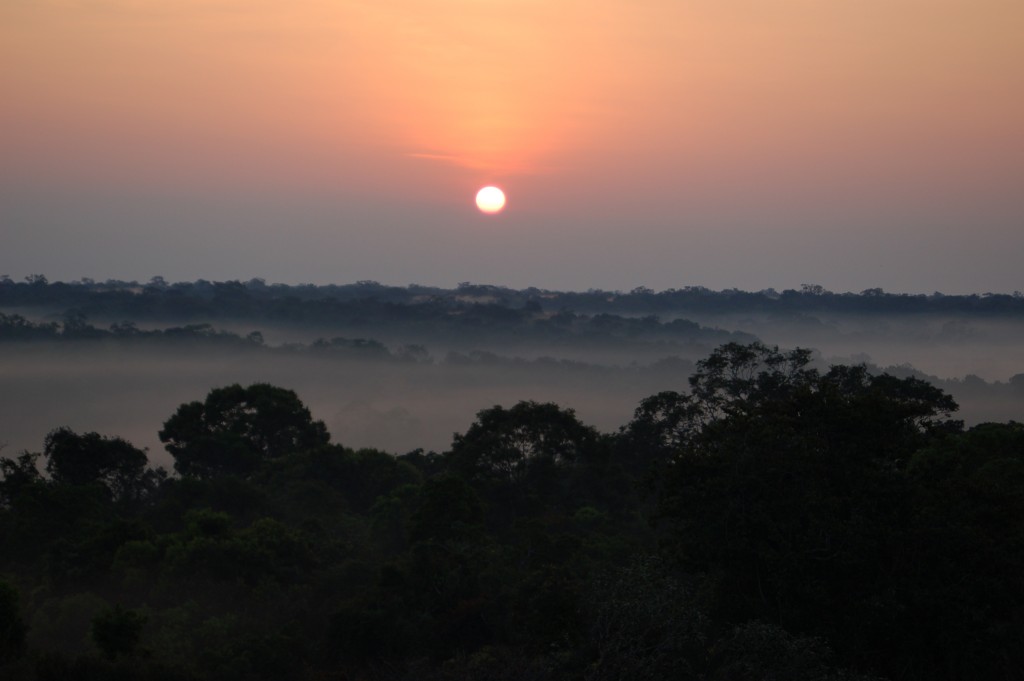
By Morgan Kelly, Office of Communications
The warming effects of climate change usually conjure up ideas of parched and barren landscapes broiling under a blazing sun, its heat amplified by greenhouse gases. But a study led by Princeton University researchers suggests that hotter nights may actually wield much greater influence over the planet’s atmosphere as global temperatures rise — and could eventually lead to more carbon flooding the atmosphere.
Since measurements began in 1959, nighttime temperatures in the tropics have had a strong influence over year-to-year shifts in the land’s carbon-storage capacity, or “sink,” the researchers report in the journal Proceedings of the National Academy of Sciences. Earth’s ecosystems absorb about 25% of the excess carbon from the atmosphere, and tropical forests account for about one-third of land-based plant productivity.
During the past 50 years, the land-based carbon sink’s “interannual variability” has grown by 50 to 100 percent, the researchers found. The researchers used climate- and satellite-imaging data to determine which of various climate factors — including rainfall, drought and daytime temperatures — had the most effect on the carbon sink’s swings. They found the strongest association with variations in tropical nighttime temperatures, which have risen by about 0.6 degrees Celsius since 1959.
First author William Anderegg, an associate research scholar in the Princeton Environmental Institute, explained that he and his colleagues determined that warm nighttime temperatures lead plants to put more carbon into the atmosphere through a process known as respiration.
Just as people are more active on warm nights, so too are plants. Although plants take up carbon dioxide from the atmosphere, they also internally consume sugars to stay alive. That process, known as respiration, produces carbon dioxide. Plants step up respiration in warm weather, Anderegg said. The researchers found that yearly variations in the carbon sink strongly correlated with variations in plant respiration.
“When you heat up a system, biological processes tend to increase,” Anderegg said. “At hotter temperatures, plant respiration rates go up and this is what’s happening during hot nights. Plants lose a lot more carbon than they would during cooler nights.”
Previous research has shown that nighttime temperatures have risen significantly faster as a result of climate change than daytime temperatures, Anderegg said. This means that in future climate scenarios respiration rates could increase to the point that the land is putting more carbon into the atmosphere than it’s taking out, “which would be disastrous,” he said.
Of course, plants consume carbon dioxide as a part of photosynthesis, during which they convert sunlight into energy. Photosynthesis also is sensitive to rises in temperature, but it occurs only during the day, whereas respiration occurs at all hours and thus is more sensitive to nighttime warming, Anderegg said.
“Nighttime temperatures have been increasing faster than daytime temperatures and will continue to rise faster,” Anderegg said. “This suggests that tropical ecosystems might be more vulnerable to climate change than previously thought, risking crossing the threshold from a carbon sink to a carbon source. But there’s certainly potential for plants to acclimate their respiration rates and that’s an area that needs future study.”
This research was supported by the National Science Foundation MacroSystems Biology Grant (EF-1340270), RAPID Grant (DEB-1249256) and EAGER Grant (1550932); and a National Oceanic and Atmospheric Administration (NOAA) Climate and Global Change postdoctoral fellowship administered by the University Corporation of Atmospheric Research.
William R. L. Anderegg, Ashley P. Ballantyne, W. Kolby Smith, Joseph Majkut, Sam Rabin, Claudie Beaulieu, Richard Birdsey, John P. Dunne, Richard A. Houghton, Ranga B. Myneni, Yude Pan, Jorge L. Sarmiento, Nathan Serota, Elena Shevliakova, Pieter Tan and Stephen W. Pacala. “Tropical nighttime warming as a dominant driver of variability in the terrestrial carbon sink.” Proceedings of the National Academy of Sciences, published online in-advance of print Dec. 7, 2015. DOI: 10.1073/pnas.1521479112.

You must be logged in to post a comment.